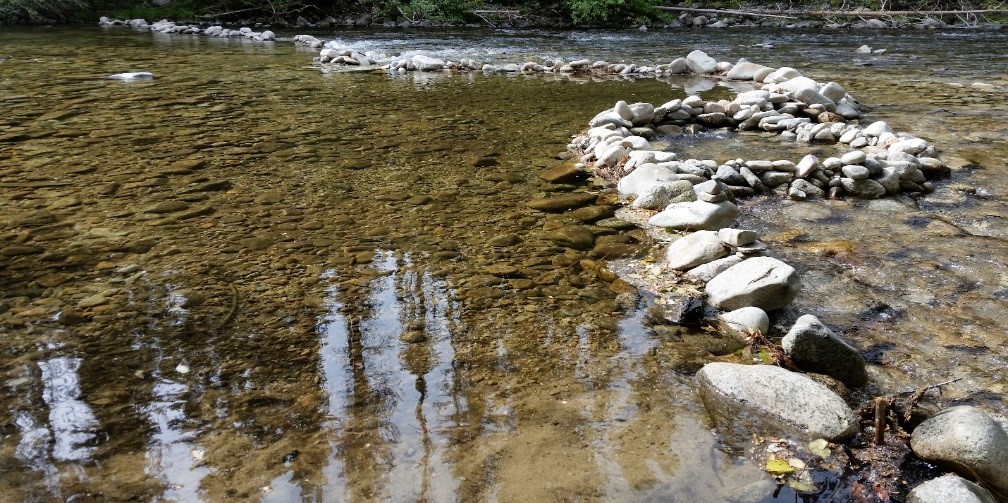On a hot summer day, few things are as enjoyable as soaking in a cool mountain stream. A seemingly harmless task of stacking rocks to create pools in streams or rivers may seem inviting, however, human created wading pools have several unintended consequences including; 1) restricting fish passage to cool oxygenated water refuges, 2) blocking access to key spawning areas, 3) artificially concentrating fish, and 4) altering stream hydrology.
In Idaho it is unlawful to alter the stream channel (without the appropriate permits) and to block fish passage. Additionally it’s important to understand landownership in the areas you access. Accessing streams through private property is illegal unless a person receives landowner permission to access the area.
Restrict access to cool water
Cold water can hold more dissolved oxygen than warm water, which can be critical to fish during the hot summer months. During summer, as water temperatures increase, oxygen levels decrease. When water is dammed into a wading pool, it can widen the stream and slow the stream’s velocity causing the water to warm up faster. A single pool may seem to be insignificant however, some stream reaches have multiple dams with only yards between them. Dam structures can restrict access to cool oxygenated water refuges farther upstream.
Block spawning access
Wading pool dams can block access to critical spawning areas. Water levels generally decline as summer progresses. The tops of dams built in June or July, which have water flowing over them, can be high and dry when fish try to reach their spawning areas in late summer. Beaver dams, unlike some of these man-made structures, are usually higher in the watershed and most have opening in them to allow fish passage.
Concentrate fish
Wading pool dams can also artificially concentrate fish. This can increase their exposure to stress, and predators. Physical stress during migration is one of the major factors of pre-spawn mortality. By the time an adult Chinook reaches Idaho, they have already swam more than 500 miles from the Pacific Ocean. Passage over wading pool dams can further weaken them and also make them more vulnerable to predators such as bears, river otters, and other wild or domestic animals.
Altering stream hydrology
It is unlawful for any person to engage in any project or activity which will significantly alter a stream channel without first applying for and receiving a permit to do so. In addition, no person shall construct or maintain a dam or other obstruction which restricts the free and uninterrupted passage of fish in any stream in Idaho without a proper fish passage way. Penalties for violating these laws can be severe and include fines up to $1,000 and jail time up to six months. In some instances, each day a violation occurs can be punishable as a separate offense.
Landowner concerns
Historic recreational sites may change hands over the years and what was once allowed for previous landowners is not permitted by current landowners. Check twice and ask permission before entering private property. Landowners have the right to cite individuals for criminal or recreational trespass, which are initially misdemeanors and carry financial penalties.
If you are looking for a swimming, wading or soaking area, look for pools in the river made by nature. If you notice human-built stream altering structures, please notify your local law enforcement or Idaho Fish and Game at (208) 799-5010. Thanks for helping to manage wading pool dams wisely.



